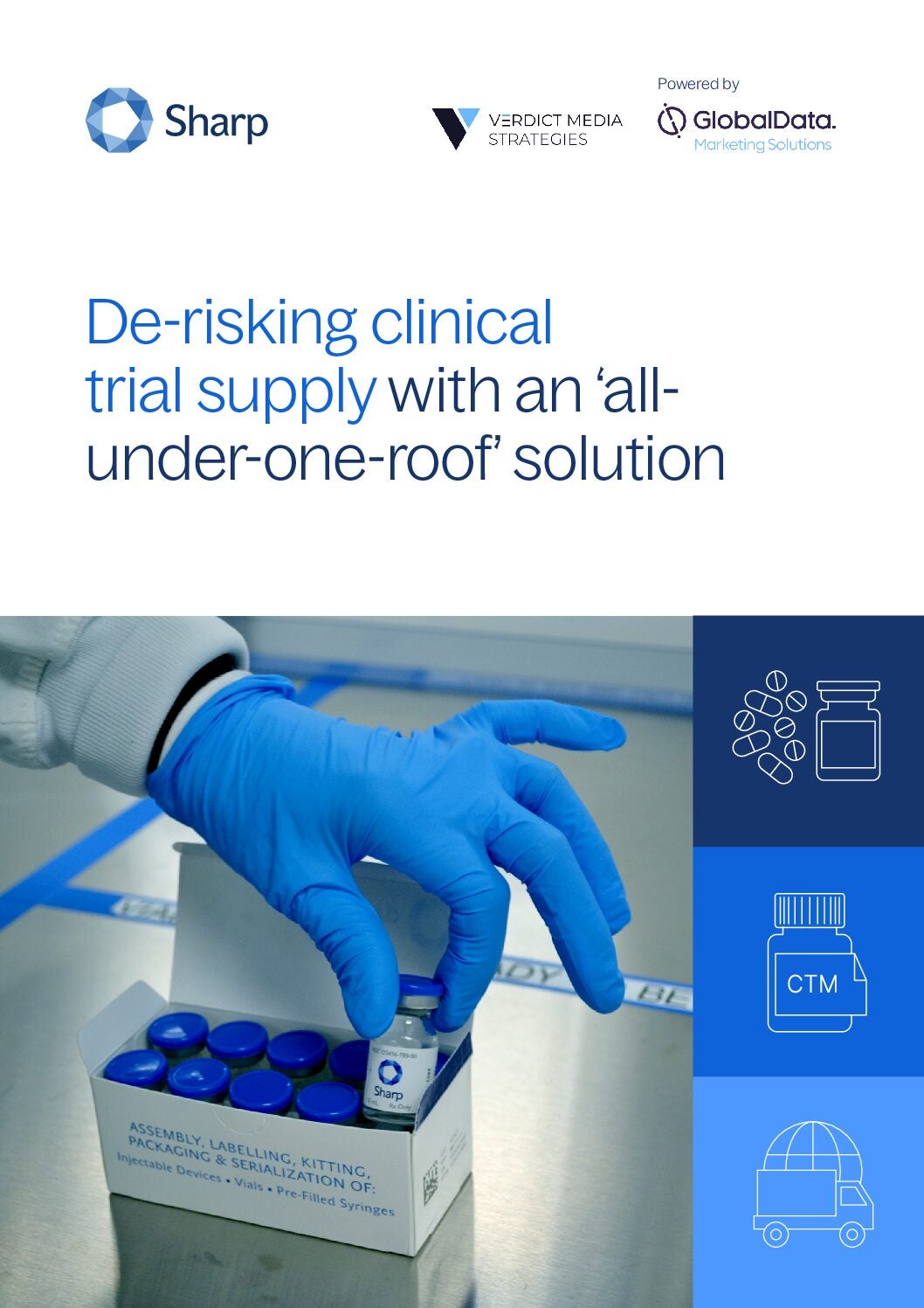
Around ten years ago, everyone was talking about pooling supplies in clinical trials. Sharing drug products, especially in-house, seems like a no brainer. It saves on resources, costs and supply chains.
Pooling inventory across program levels can greatly reduce manufacturing and bulk supply costs as well as packaging needs. Overages can be managed at the program level, rather than each protocol individually, and this approach allows for continuous assessment of recruitment rates, shipments and storage needs, lowering costs.
It also supports sites with limited storage capacity and reduces potential patient risk, by ensuring continuity of supply, facilitating sooner availability of supply and reducing the risk of dose interruptions due to supply shortages. The process becomes more streamlined, with fewer issues to deal with such as multiple product lots with different expiry dates. This can lead to significant cost reductions, especially in large and extensive studies.
Many clinical study managers dream of faster supply availability since it can support faster recruitment. So why don’t more sponsors use this strategy for clinical trials, particularly as the number, costs and complexities of trials continues to increase?

Clinical trials are increasing and becoming more complex
Whilst the complete picture across the globe is mixed, clinical trials are increasing globally. According to GlobalData’s database, a total of 25,624 trials were initiated in 2023 – a 68% increase from the 15,235 that commenced in 2013. The most growth in clinical trial activity is taking place in the Asia-Pacific (APAC) region, with countries such as India, South Korea, and Australia increasing their trial activity by as much as three times over the last decade.[i]
The data compiled for the seven countries included all the trials conducted in that year from 2012–2022. These trials were then evaluated as a change in the countries’ trial activity with the number of trials conducted in the specific country in 2012 taken as the baseline (one). A trial activity of more than one in the following year shows an increase in the number of trials in the country and less than one demonstrates a decline in the number of trials in that country.
A recent paper[ii] by Markey et al titled Clinical trials are becoming more complex analyzed over 16,000 trials and revealed that trial complexity has increased over time. The paper concludes that this is a factor in the increasing costs and timelines of clinical trials, necessitating sponsors to weigh the trade-off between speed and complexity.
Contract Development and Manufacturing Organizations (CDMOs) are reporting that an increasing number of customers are slashing their clinical packaging projects due to tighter budget constraints. But what if costs could be saved in other ways?
The promise of pooling
It’s common for large pharma organizations to have several clinical supply managers that each oversee anywhere from five to 100 studies. Without considering the demand across the company’s other programs, managers often predict the need for bulk drug products, primary packaged goods, and finished goods for the studies only within their purview. For example, one supply manager may be running a product that comes in two strengths and two counts and is supplied to ten studies while another is managing a separate group of studies with similar supply needs.
However, by pooling a central inventory of primary packaged goods and identifying common study requirements, clinical supplies can possibly be available for use for different studies. If the drug product is packaged uniformly throughout all of the pool’s trials, one pool can supply several different studies. Packaging a single lot of 10,000 bottles is much easier, faster, and more cost effective than packaging 20 lots of 500 bottles with each lot requiring a line clearance, set-up, sampling, testing of samples, the overhead associated with the data entry of multiple lots into inventory management systems, and maintenance of 20 different spaces in warehouse storage.
If necessary, labelling can be completed via a just-in-time (JIT) process or protocol can be managed via your IRT platform. Downstream, companies could also consider the use of a single IRT system to support multiple programs when the drug supply and protocol requirements (dose, regimen, data collection) are similar. Imagine the savings from a single build, single monthly PM fee, and UAT testing.
Michael MacNeir is Vice President of Business Development at Sharp Services, a leader in clinical trial supply services and packaging. MacNeir explains that drug pooling typically occurs at either a site or depot level.
“The protocol is assigned by the site when the patient is randomized in the trial,” MacNeir says. “The closer to the patient you can assign supplies, the more flexibility you have within those supplies. However, sites are not always willing to perform this activity and some countries do not allow this to be done outside of a production environment.”
For depot drug pooling, protocols are typically assigned at the time of distribution either through a JIT or IRT (Interactive Response Technology) platform.
“Pooled supplies offer a level of flexibility compared to protocol-specific labelled kits,” explains MacNeir. “Sharp is in a great position to offer these services to our customers and provide a level of experience that our customers can leverage. In addition to our formulation development, packaging, global storage and distribution services, we offer JIT labelling, which can sometimes be done within the distribution setting rather than in a production setting (where countries allow), which reduces the time needed from request to ship. Sharp is in a unique position to also offer a state-of-the-art IRT platform for a true one-stop shop.”
Benefits and challenges of drug pooling
MacNeir says that drug pooling has many advantages but hasn’t taken off as expected due to the perceived challenges and complexity with a pooled inventory. However, through good management, many issues can be overcome.
Benefits
Cost effective: Cost savings are made by reducing the need for redundant resources and minimizing waste. For example, protocol 001 may have a slower enrollment rate than anticipated, so you need to flex those supplies for 002. If not pooled, this would require the need for unlabeling, and relabeling activities, and/or expedited packaging campaigns if the product is available at the depot already, as well as indirect costs such as loss of patients due to not being able to screen in, impacts on the overall patient experience, and potential endpoint/market delays.
Efficiency: Efficiency is enhanced by consolidating resources, streamlining processes and accelerating timelines. Drug pooling reduces the number of packaging processes, potentially enabling faster initiation of clinical trials, and reduces risk of a stockout.
Flexibility and adaptability: Pooled supply strategies offer flexibility to adjust resource allocation based on evolving study needs and priorities. This adaptability is invaluable in dynamic research environments characterized by changing requirements and uncertainties.
Challenges
Complexity in logistics and management: Implementing pooled supplies requires meticulous coordination and management, including managing inventory and tracking resources, to ensure seamless execution and avoid logistical challenges. Inventory management systems such as Sharp’s Clinventory solution automate the management of drug supplies to alleviate the logistical complexities and reduce the risk of manual error. Where patient enrollment, management and randomization are required on top of this, IRT solutions such as Sharp’s Clinteract may be necessary.
How do regulators feel about pooled supplies?
There are regulatory concerns to navigate when pooling drug products. The FDA and EMA both emphasize the significance of data integrity and validity in clinical trials, requiring sponsors to ensure pooling does not compromise study data quality through robust quality control measures and documented rationale.
Sponsors must establish comprehensive quality management systems to ensure the integrity of pooled drug products and resources, including procedures for sample handling, storage, transportation, and documentation. Detailed information must be provided in regulatory submissions, including IND, CTA, and NDA applications, along with additional documentation for regulatory approval.
Sponsors should not only consider the activities associated with the production, shipping, and distribution of supplies, but they also need to consider how returns and accountability will be handled. “I have seen some customers have success when including returns and accountability data collection within their IRT,” adds MacNeir.
Sponsors must conduct thorough risk assessments to identify potential risks and implement mitigation measures. This includes evaluating pooling’s impact on data quality, safety, and efficacy endpoints, and addressing regulatory concerns proactively. Organizational interpretation of ICH E6 R2 can also control protocol specifics within IRT.
While regulatory agencies prioritize data integrity and patient safety, MacNeir believes they also recognize the need for flexibility and innovation in clinical trial design.
“Sponsors should engage with authorities early to discuss pooling strategies and seek guidance,” he advises. “Flexibility can be granted in cases where pooled supplies offer clear advantages.”
Weighing the pros and cons
There is little doubt that pooled clinical supplies can optimize resource utilization and research impact in certain trials, particularly those where:
- The study drug could be used (and packaged) in a similar way across multiple protocols
- The study is sufficiently large to include an IRT or IRS
- The study faces significant risk of overage or stockout
- The study follows an adaptive model, meaning it may have several arms underway simultaneously
However, sponsors must weigh the above pros and cons, implement quality control measures, and address any regulatory concerns. They should look at all stakeholders within the organization to leverage the tools and strategy to support a pooled approach. Approval will rest on proactively addressing risks, implementing quality control, as well as providing documentation to ensure data integrity, patient safety, and regulatory compliance.
[i] https://www.clinicaltrialsarena.com/features/uk-government-uphill-battle-clinical-trials/?cf-view
[ii] Markey N, Howitt B, El-Mansouri I, Schwartzenberg C, Kotova O, Meier C. Clinical trials are becoming more complex: a machine learning analysis of data from over 16,000 trials. Sci Rep. 2024 Feb 12;14(1):3514. doi: 10.1038/s41598-024-53211-z. PMID: 38346965; PMCID: PMC10861486. https://pubmed.ncbi.nlm.nih.gov/38346965/#:~:text=Looking%20at%20this%20score%20across,are%20indeed%20becoming%20more%20complex.



